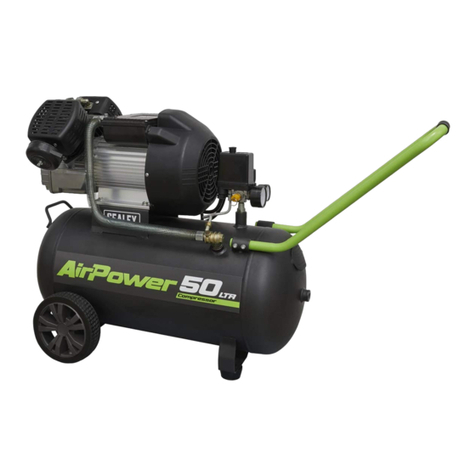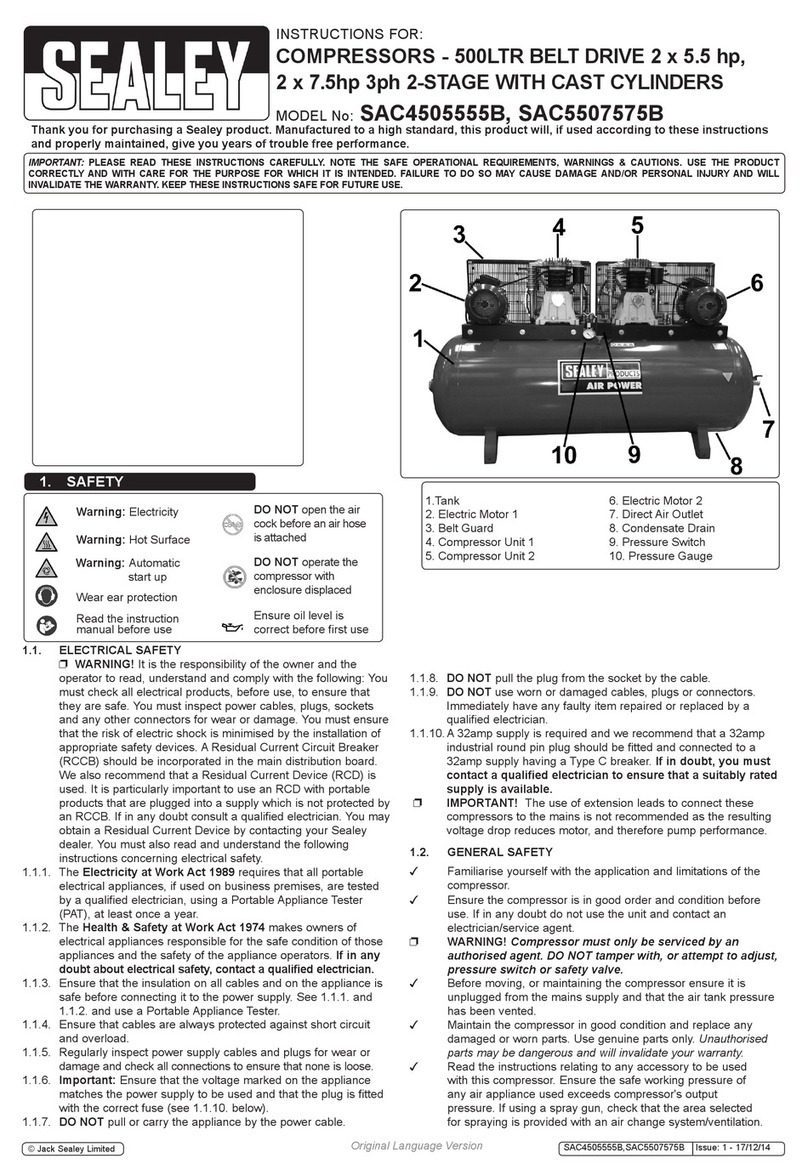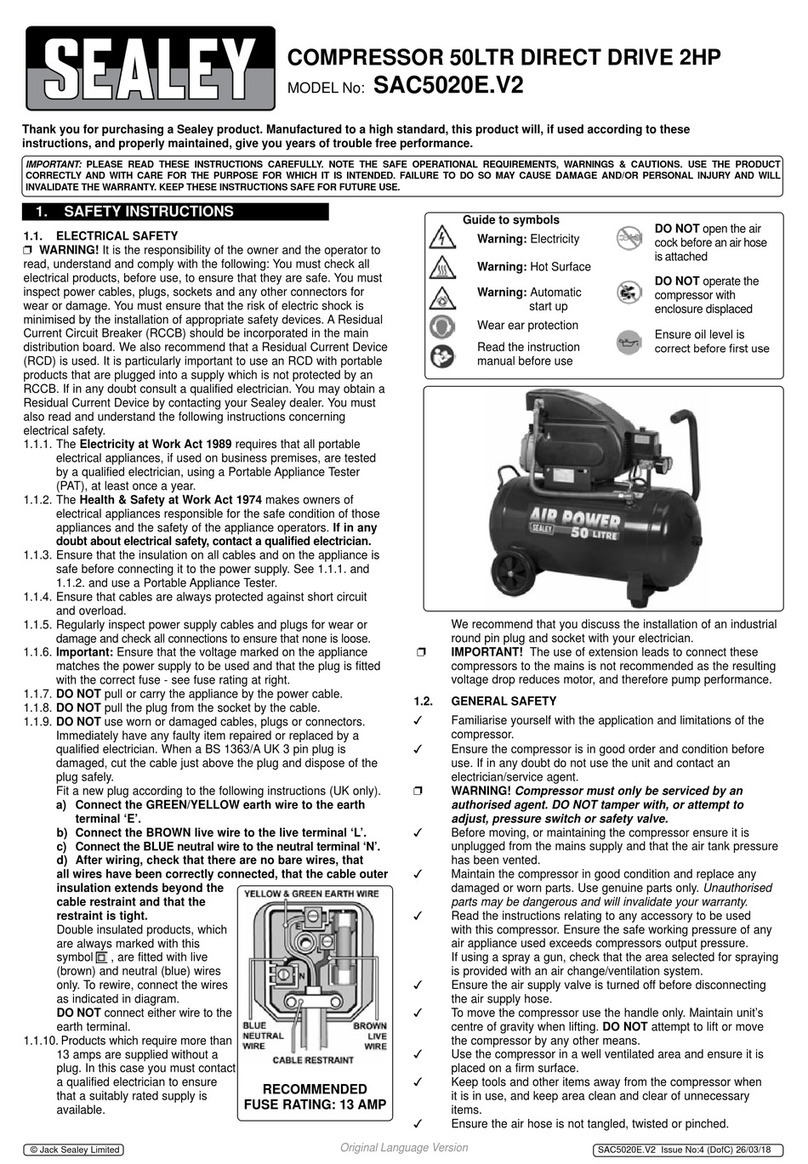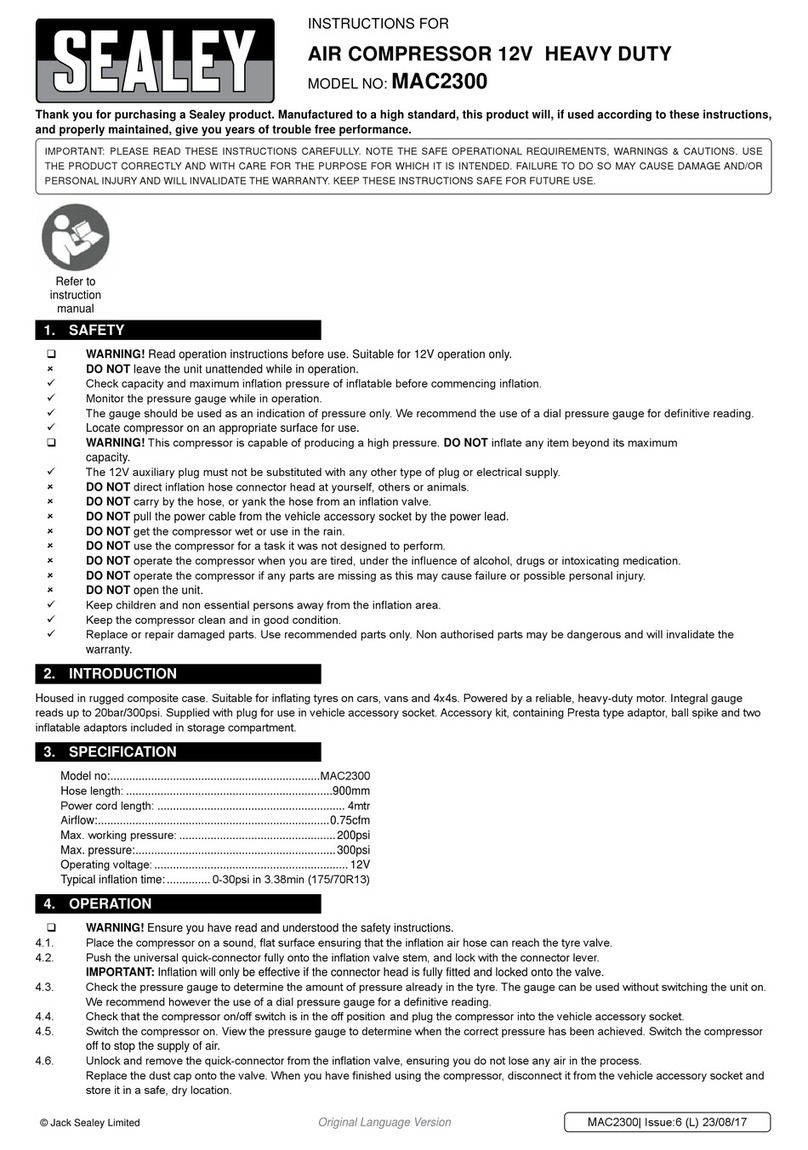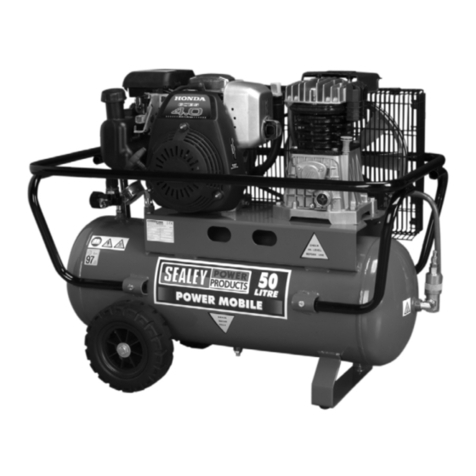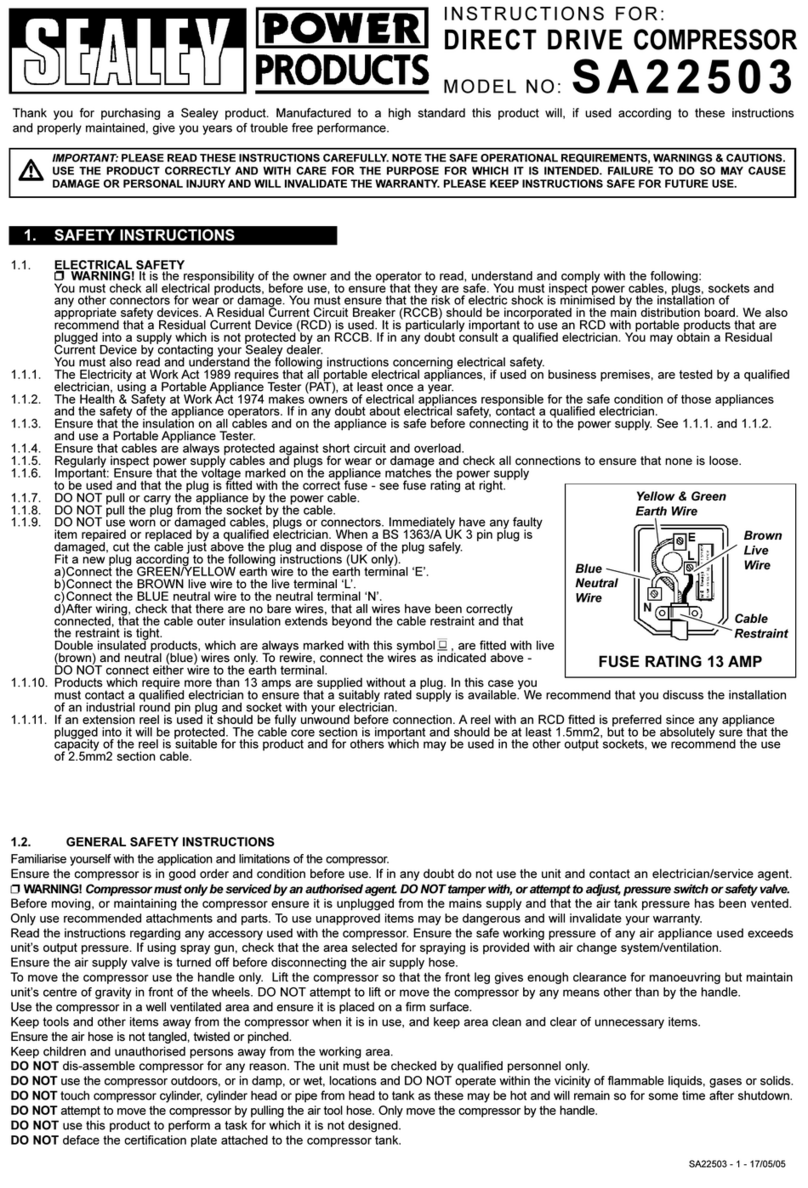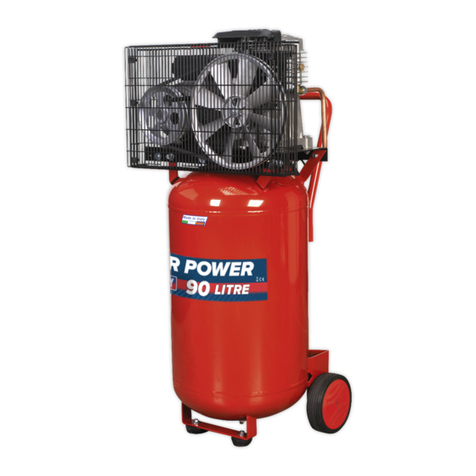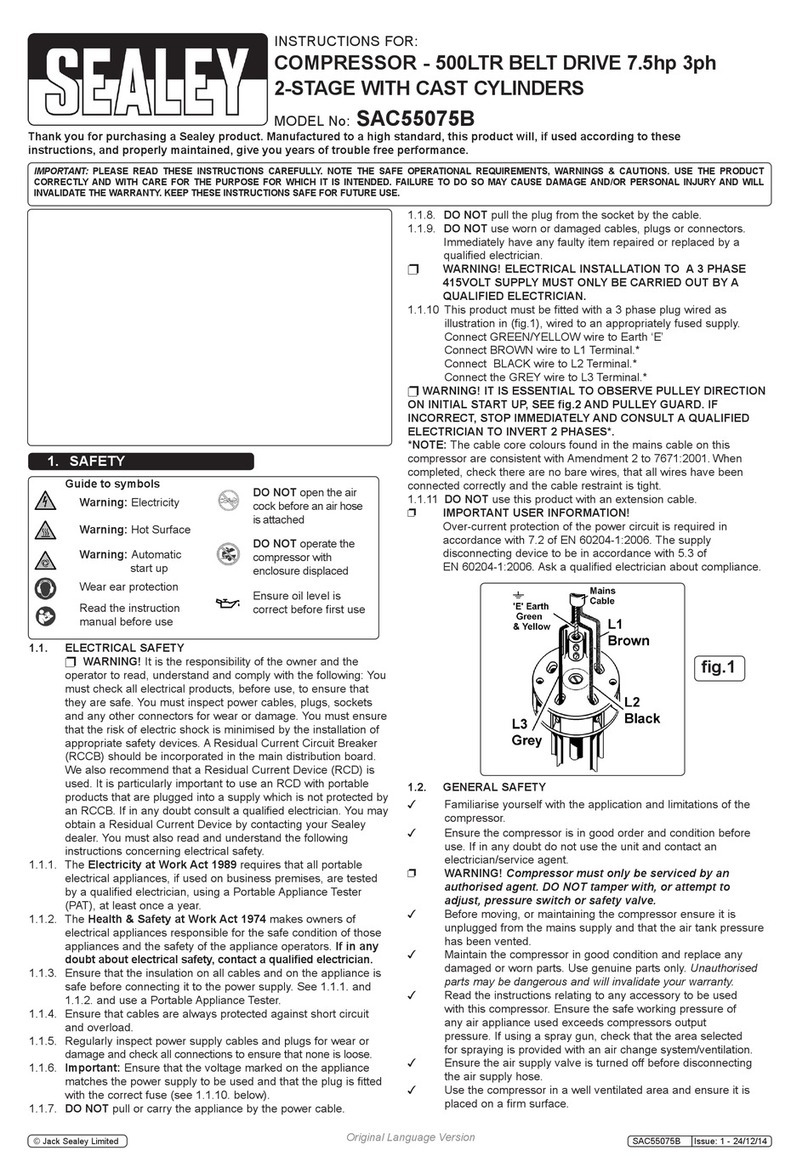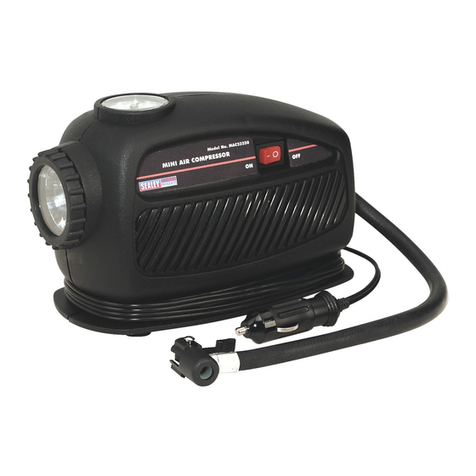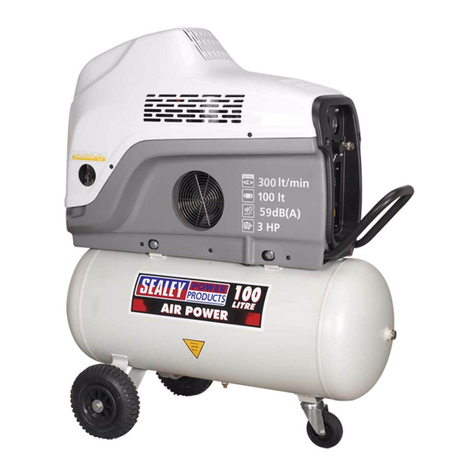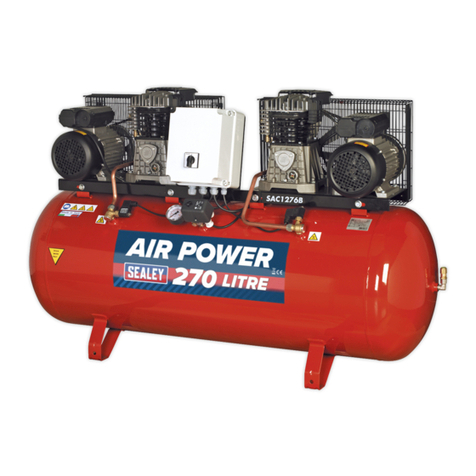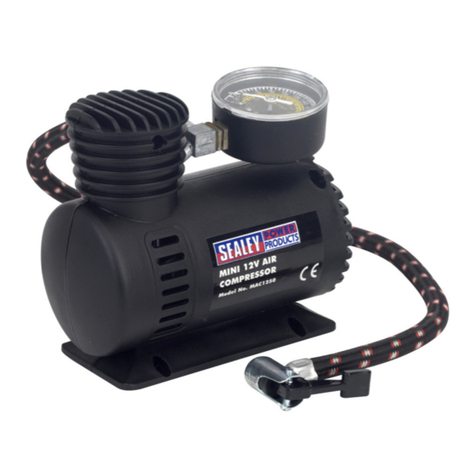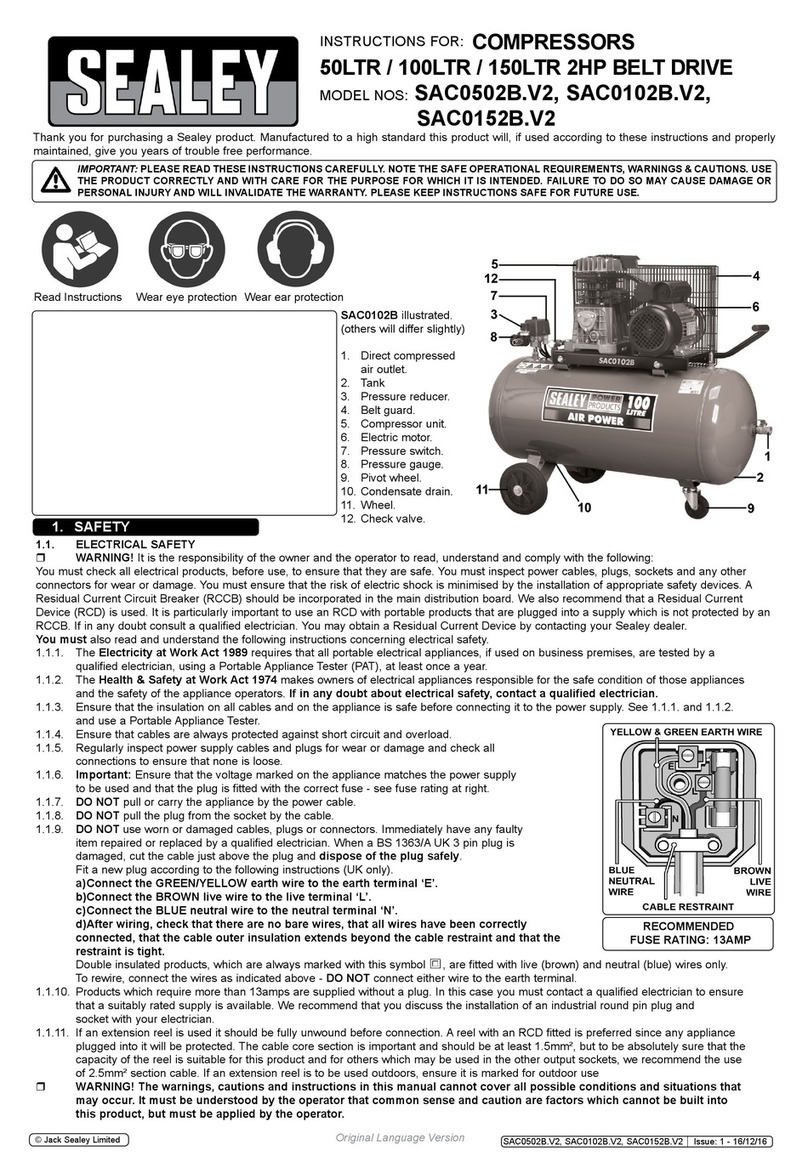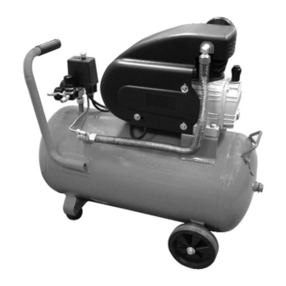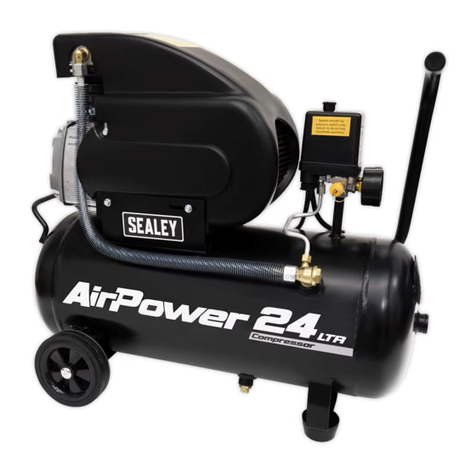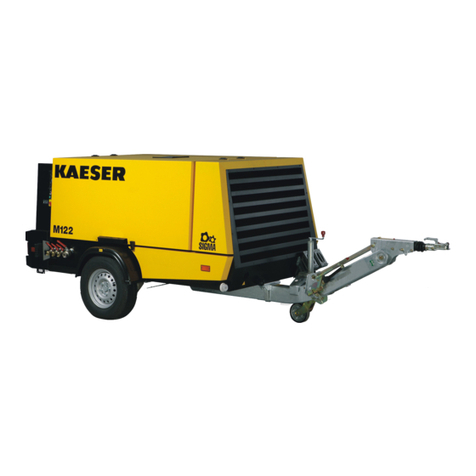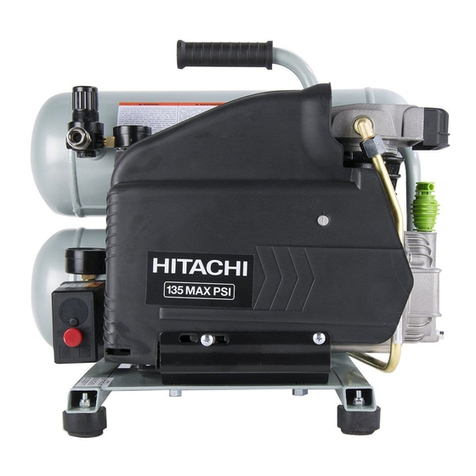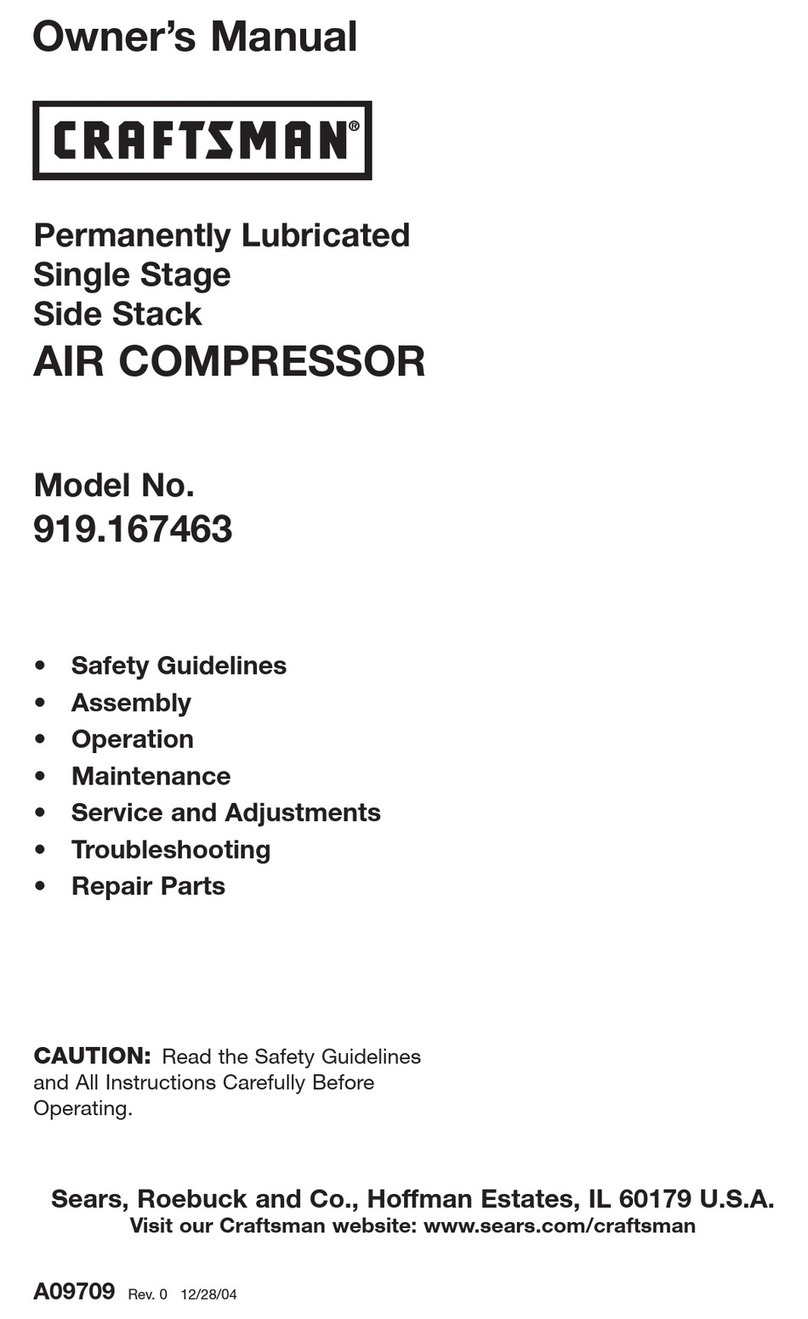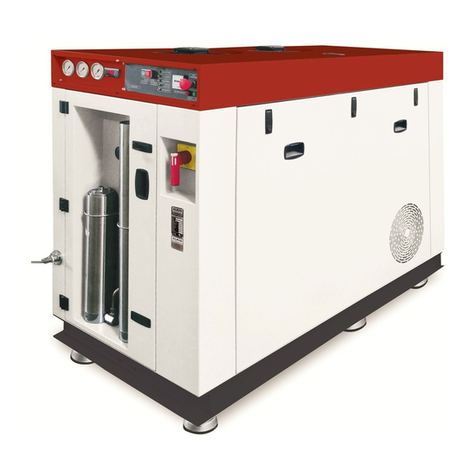
9Maintain the compressor in good condition and replace any damaged or worn parts. Use genuine parts only. Unauthorised parts may
be dangerous and will invalidate your warranty.
9Read the instructions relating to any accessory to be used with this compressor. Ensure the safe working pressure of any air
appliance used exceeds compressors output pressure. If using a spray gun, check that the area selected for spraying is provided with
an air change system/ventilation.
9Ensure the air supply valve is turned off before disconnecting the air supply hose.
9To move a transportable compressor use the handle only.
8DO NOT attempt to move the compressor by any other means.
9Use the compressor in a well ventilated area.
9Ensure the compressor is placed on a firm surface.
9Keep tools and other items away from the compressor when it is in use.
9Keep area clean and clear of unnecessary items.
9Ensure the air hose is not tangled, twisted or pinched.
9Keep children and unauthorised persons away from the working area.
8DO NOTdis-assemblecompressorforanyreason.Theunitmustbecheckedbyqualifiedpersonnelonly.
8DO NOT use the compressor outdoors, or in damp, or wet locations.
8DO NOT operate within the vicinity of flammable liquids, gases or solids.
8DO NOT touch the compressor cylinder, cylinder head or pipe from head to tank as these may be hot.
8DO NOT use this product to perform a task for which it has not been designed.
8DO NOT deface the certification plate attached to the compressor tank.
8DO NOT cover the compressor or restrict air flow around the unit whilst operating.
▲DANGER! DO NOT direct the output jet of air towards people or animals.
8DO NOT operate the compressor without an air filter.
8DO NOT allow anyone to operate the compressor unless they have received full instructions.
WARNING! The air tank is a pressure vessel and the following safety measures apply:
8DO NOT tamper with the safety valve.
8DO NOT modify or alter the tank in any way.
8DO NOT strap or weld anything to the tank.
8DO NOT subject the tank to impact, vibration or to heat.
8DO NOT allow contact with abrasives or corrosives.
9Drain condensation from tank daily and inspect inside walls for corrosion every three months and have a detailed tank inspection
carried out annually. The tank shell must not fall below the certified thickness at any point.
WARNING! If an electrical fuse blows, ensure it is replaced with an identical fuse type and rating.
9When not in use, store the compressor carefully in a safe, dry, childproof location.
9When the compressor is not in use it should be switched off, disconnected from the mains supply and the air drained from the tank.
1.3. INSPECTION OF PRESSURE TANK BOTH INTERNAL AND EXTERNAL
1.3.1. Under the Pressure systems Safety Regulations 2000 it is the responsibility of the owner of the compressor to initiate
asystemofinspectionthatbothdenesthefrequencyoftheinspectionandappointsapersonwhohasspecicresponsibilityfor
carrying out the inspection.
2. INTRODUCTION
Twincapacitorsandacentrifugalswitchaidtrouble-freestart-up.Pumpfeaturesheavy-dutyfullcastcylinders,cappedbyalloyheadsfor
improvedheatdissipationandlong-life.Featuresaneasy-to-usebespokecontrolpanelwithtwooutlets,oneregulatedandonedirect.
Heavy-dutydriveguardsprotectbeltandywheelthatisdesignedtoforceairoverthepumptoaidcooling.Heavy-dutymetalwheelstted
with needle roller bearings and puncture proof tyres. Supplied with hose reel to keep your workspace tidy. Includes a drain valve for easy
releaseofcondensedwaterbuild-upinthetank.
3. SPECIFICATION
Model No: ............................................................................SAC3153B.V2 ....................................................... SAC3203B.V2
Air Displacement cfm(L/min):.......................................................13.4(380) ...............................................................13.4(380)
Maximum Free Air Delivery cfm(L/min): .......................................10.9(310) ...............................................................10.9(310)
Maximum Pressure:..............................................................145psi(10bar) ........................................................ 145psi(10bar)
Minimum Rated Supply:........................................................................16A........................................................................16A
Motor Output:........................................................................................3hp ........................................................................ 3hp
Outlet:......................................................Hi-FlowQuickReleaseCoupling ...........................Hi-FlowQuickReleaseCoupling
Phase:...................................................................................................1ph ........................................................................ 1ph
Receiver Capacity:..............................................................................150L.......................................................................200L
Size (W x D x H): .......................................................1210 x 600 x 970mm ...........................................1410 x 600 x 1020mm
Speed: ..........................................................................................1243rpm ................................................................1243rpm
Supply:........................................................................................ 230V/16A...............................................................230V/16A
4. ASSEMBLY
Unpack the product and check contents. Should there be any damaged or missing parts contact your supplier immediately.
Refer to attached parts list.
Save the packing material for future transportation of the compressor. We recommend that you store the packing in a safe location,
at least for the period of the guarantee. Then, if necessary, it will be easier to send the compressor
to the service centre.
4.1. WHEEL ATTACHMENT
4.1.1. Assemble the wheels and swivel castor using the nuts, bolts and washers supplied (fig 1).
4.2. ATTACH THE FILTERS
4.2.1. Screw the filter unit into the port openings in each head as shown in (fig 3).
4.2.2. Place a filter cover over each threaded rod protruding from the back half of the filter
and secure each with a wing nut (fig 4).
Original Language Version
© Jack Sealey Limited
g.1
SAC3153B.V2, SAC3203B.V2 Issue:2 (2) 12/04/23
